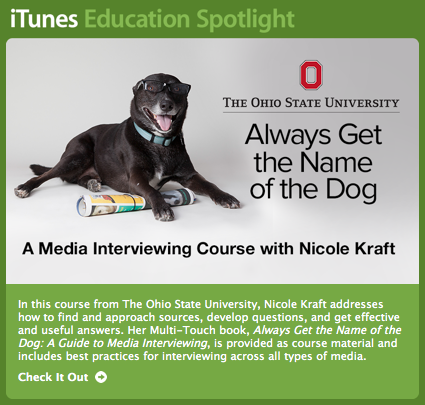By: Jeffrey Parvin, Professor and Co-Director, Biomedical Sciences Graduate Program and Amy Lahmers, Program Manager, Biomedical Sciences Graduate Program
This week marks the sixth week of our efforts to integrate iPads into the first year courses for our Biomedical Sciences Ph.D. students. The effort to push the limits of technology has been both exciting and challenging.
The 18 students were given their iPad along with a short training session on August 22. It was clear on this day that some would be quick adapters and others were more hesitant. The Program purchased four Apps for students: Pages (Apple version of Word), Keynote (Apple version of PPT), Explain Everything (for lecture capture), and Notability (for note taking). Students are also using iTunes U each day, as lectures are recorded via Mediasite and audio recordings linked to the presentation are then available to students. We found it very helpful in our adoption to discontinue using Carmen, requiring all students to use iTunes U to obtain their course materials.
Our teaching faculty members received their iPads the week before the students in a series of training sessions led by the Educational Technologists at Digital First. The Educational Technologists did a terrific job showing faculty members the basics of how to use an iPad, how instructors and students can utilize the iPad to enhance the teaching and learning experience, and how to create and deploy iPad friendly instructional materials. Faculty support for the project has been strong although in hindsight we could have allotted more time for faculty to prepare for the implementation. It has been a “learn as we go” adventure.
We are still working out some kinks, as is to be expected with any new endeavor. To attain the most complete benefit from the iPad technology, we would like to have the ability to hook up permanently an Apple TV in our classroom, thus enabling students to share what is on their screens, making the lectures more interactive. In addition, Mediasite is currently limited to two hours of recording time, cutting some lectures short, and the recording process can inhibit the use of the iPads in lectures unless the lecturer uses the Explain Everything App.
The project has been successful so far; the faculty are integrating more powerful teaching tools into the lectures, and the students are engaged in the teaching process. We are grateful for the opportunity to work with the Digital First Technology Team. Their expertise has been a key component for integrating the iPad into the teaching process.


